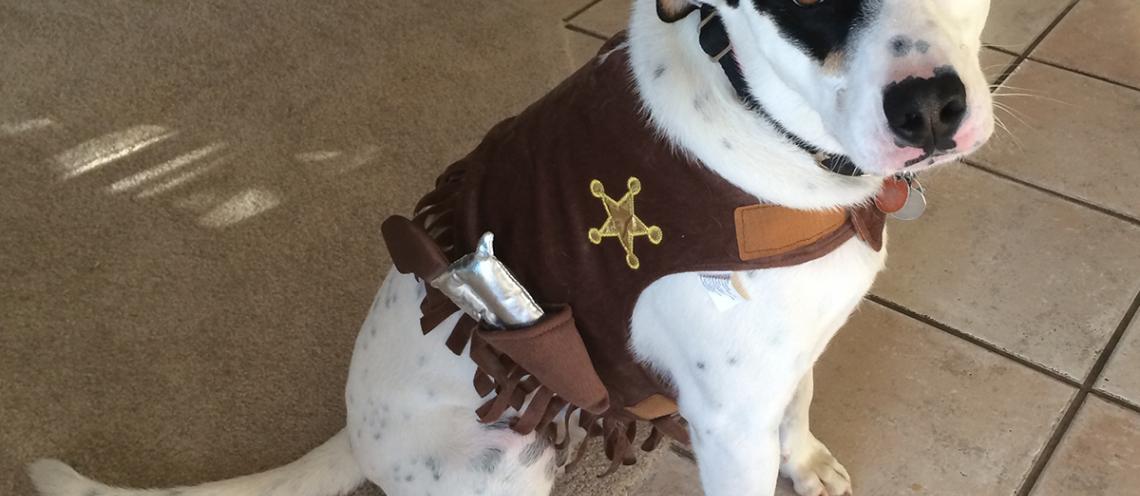
Veterinary Viewpoints: Halloween pet safety
Friday, October 23, 2015
While having a scary costume may be the goal of some trick-or-treaters, avoiding scary situations for your pet is important. Here are some helpful tips to keep pets safe on Halloween.
As the guardian of your family and home, many dogs might feel threatened by all the visitors. Before the doorbell rings with your first costumed visitor, consider putting your pets in an area where they feel safe. This might be in a crate with a new toy or favorite treat or in a room away from all the activity.
If your pet doesn’t mind the activity, be sure it is properly identified or microchipped in case it accidentally slips out the door when you greet the next goblin or princess.
Keep Halloween candy and treats away from your pets, especially if it contains chocolate or xylitol (a common sugar substitute found in sugar-free candies and gum). The darker the chocolate, the more deadly it can be. Also, some pets will consume candy whole, including the wrapper, which can potentially cause an intestinal blockage.
Glow sticks and glow jewelry can also be hazardous if swallowed by pets. While the liquid in these products isn’t likely toxic, it tastes really bad and makes pets salivate excessively and act strangely.
If your pet consumes candy or other potentially dangerous objects or food, contact your veterinarian immediately. A quick response could save your pet’s life.
If you want to include your pet when the kids are eating treats, buy appropriate pet treats at the store. Look for something new that your dog hasn’t had before. When you give your human children a treat, give a healthy treat to your furry child as well.
If your home is decorated with candles, keep them out of your pet’s reach. An excited pet can knock over a candle and start a fire or suffer burns.
Lastly, if you plan to get your furry family members into the "spirit" of Halloween, make sure the costume fits properly and is comfortable.
Avoid a costume with pieces that can easily be chewed off. Make sure your pet is able to see, hear, breathe, open its mouth, and move while dressed up.
You may want to try the costume on ahead of time to get your pet used to wearing it. Never leave your pet unsupervised while it is wearing a costume.
Halloween can be a lot of fun for children and grownups. Avoid a trip to the emergency room — veterinarian or human — and keep your pet safe during the holiday.
by Elisabeth J. Giedt, DVM
Veterinary Viewpoints is provided by the faculty of the OSU Veterinary Medical Hospital. Certified by the American Animal Hospital Association, the hospital is open to the public providing routine and specialized care for all species and 24-hour emergency care, 365 days a year.
